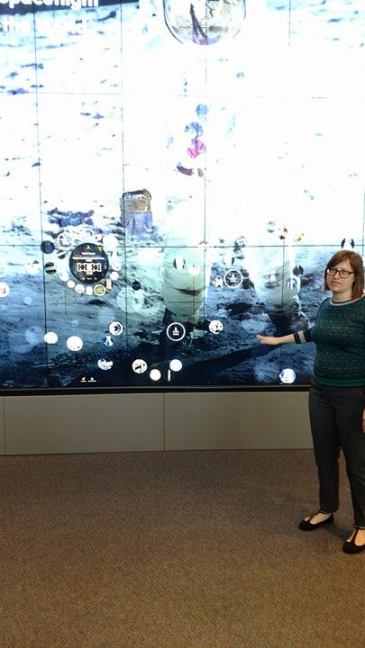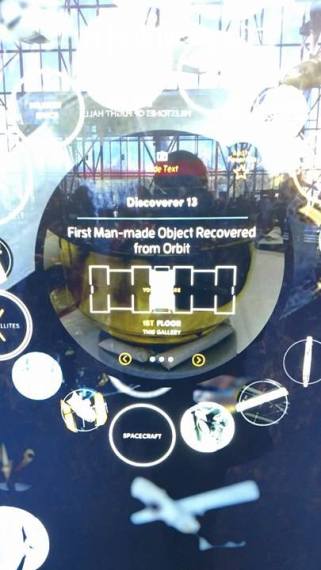The main thread I found today during our visits to the National Air & Space Museum and the National Museum of the American Indian was how technology can affect visitors’ experiences with objects.

At the Air & Space Museum, I thought this was illustrated through the new interactive “tech” wall in the main lobby. Prior to the demonstration of the technology, I thought the wall was purely decorative. When the staff member began interacting with the wall, I saw just how great of a tool it was. It allowed visitors to “favorite” objects and send them to their phones via the Go Flight app. It also pointed out additional information and even provided a location within the museum (which was my favorite part of the wall).

Tech wall provides the location of an object, “First Man-made object Recovered from Orbit.”
With that being said, the displays around the wall did nothing to aid the visitors. Banners promoted the Go Flight app, but none of the banners mentioned how the tech wall could be utilized! I would have never known about the tool had the staff member shown us how it worked. I believe better signage regarding the tech wall was necessary to ensure that visitors took advantage of the staff’s hard work. In this case, the technology could better serve visitors and allow them more chances to interact with objects. But it seemed like that wasn’t actually the case. Then, we traveled over to the National Museum of the American Indian in order to learn about their new interactive initiatives.

Rotunda of the National Museum of the American Indian
Although I didn’t take any photos of the Indian Removal interactive in the “Nation to Nation” exhibition, this was my favorite part of the day. The interactive not only attempted to provide factual information about the Indian Removal, but allowed visitors to feel some of the same emotions the Native Americans experienced while this process was ongoing. The interactive matched choices of the user to real-life scenarios. I thought that their design choice to use “amped-up” stick figures was very powerful and appropriate. It allowed visitors to look past facial features or cultural stereotypes and instead learn about the treaty process. It seemed that the interactive was very compelling and successful in providing an interactive way for visitors to view museum collection objects and grasp large and difficult concepts. For me, the National Museum of the American Indian’s use of technology was more successful than the National Air and Space Museum’s.